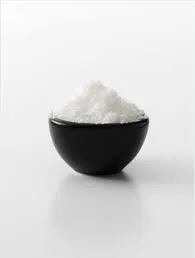- Afrikaans
- Albanian
- Amharic
- Arabic
- Armenian
- Azerbaijani
- Basque
- Belarusian
- Bengali
- Bosnian
- Bulgarian
- Catalan
- Cebuano
- Corsican
- Croatian
- Czech
- Danish
- Dutch
- English
- Esperanto
- Estonian
- Finnish
- French
- Frisian
- Galician
- Georgian
- German
- Greek
- Gujarati
- Haitian Creole
- hausa
- hawaiian
- Hebrew
- Hindi
- Miao
- Hungarian
- Icelandic
- igbo
- Indonesian
- irish
- Italian
- Japanese
- Javanese
- Kannada
- kazakh
- Khmer
- Rwandese
- Korean
- Kurdish
- Kyrgyz
- Lao
- Latin
- Latvian
- Lithuanian
- Luxembourgish
- Macedonian
- Malgashi
- Malay
- Malayalam
- Maltese
- Maori
- Marathi
- Mongolian
- Myanmar
- Nepali
- Norwegian
- Norwegian
- Occitan
- Pashto
- Persian
- Polish
- Portuguese
- Punjabi
- Romanian
- Russian
- Samoan
- Scottish Gaelic
- Serbian
- Sesotho
- Shona
- Sindhi
- Sinhala
- Slovak
- Slovenian
- Somali
- Spanish
- Sundanese
- Swahili
- Swedish
- Tagalog
- Tajik
- Tamil
- Tatar
- Telugu
- Thai
- Turkish
- Turkmen
- Ukrainian
- Urdu
- Uighur
- Uzbek
- Vietnamese
- Welsh
- Bantu
- Yiddish
- Yoruba
- Zulu
Dic . 04, 2024 05:33 Back to list
Tylosin Injection Dosage Guidelines for Effective Treatment in Veterinary Medicine
Tylosin Injection Dosage A Comprehensive Guide
Tylosin is a macrolide antibiotic commonly used in veterinary medicine to treat a variety of bacterial infections in livestock, poultry, and companion animals. It is particularly effective against Gram-positive bacteria and some intracellular pathogens. Understanding the proper dosage is crucial for the effective treatment of animals while minimizing the risk of resistance and side effects.
Pharmacology and Mechanism of Action
Tylosin works by inhibiting protein synthesis in susceptible bacteria, thereby stopping their growth and reproduction. It binds to the 50S subunit of the bacterial ribosome, interfering with the translocation step of protein synthesis. This mechanism makes tylosin effective against specific pathogens that can cause respiratory, gastrointestinal, and systemic infections in animals.
Dosage Guidelines
The appropriate dosage of tylosin can vary depending on several factors, including the type of animal, the condition being treated, and the specific formulation of the drug being used. The following are general guidelines for tylosin injection dosage
1. Livestock For cattle, swine, and sheep, the typical dosage ranges from 10 to 20 mg/kg body weight. The injection may be administered either intramuscularly or subcutaneously. For best results, the dosing schedule should be repeated every 24 hours for a period determined by the veterinarian, usually between 3 to 5 days, depending on the severity of the infection.
2. Poultry In chickens and turkeys, the injectable dose is generally around 10 to 20 mg/kg body weight as well. Given that poultry may be more sensitive to medications, careful monitoring and adherence to recommended intervals for dosage are crucial.
3. Companion Animals In dogs and cats, tylosin injection is less common but may be prescribed in specific instances, generally at a dose of around 10 to 15 mg/kg. Given the lower body weight of these animals, veterinarians often prefer oral formulations, but injectable forms can be useful for severe cases.
tylosin injection dosage

Administration Techniques
Proper administration of tylosin injections is essential to ensure efficacy and minimize discomfort or adverse reactions in animals. Here are some best practices
- Site Selection Choose an appropriate injection site, such as the neck or the muscle of the hind limb. Avoid areas with visible lesions or swelling. - Sterilization Always use sterile equipment and clean the area with an alcohol swab before injection to prevent infection.
- Technique Ensure the needle is inserted at a proper angle and depth. Aspirate the syringe to check for blood before administering the medication to avoid injecting into a blood vessel.
Monitoring and Side Effects
After administering tylosin, it is essential to monitor the animal for any signs of adverse reactions, which may include localized swelling, allergic reactions, or gastrointestinal disturbances. While most animals tolerate tylosin well, some may experience diarrhea or vomiting.
Regular follow-up visits to the veterinarian can help ensure the infection is resolving and assess the need for continued treatment. If there is no improvement after several days of treatment, it may indicate a need for a change in therapy.
Conclusion
Tylosin injection can be a powerful tool in the treatment of bacterial infections in various animal species. However, adherence to dosage guidelines and proper administration techniques are critical for achieving the best therapeutic outcomes. Always consult with a qualified veterinarian for specific recommendations tailored to the animal's health needs and circumstances. By doing so, you can ensure that your animals receive safe and effective treatment while maintaining their overall well-being.
-
Guide to Oxytetracycline Injection
NewsMar.27,2025
-
Guide to Colistin Sulphate
NewsMar.27,2025
-
Gentamicin Sulfate: Uses, Price, And Key Information
NewsMar.27,2025
-
Enrofloxacin Injection: Uses, Price, And Supplier Information
NewsMar.27,2025
-
Dexamethasone Sodium Phosphate Injection: Uses, Price, And Key Information
NewsMar.27,2025
-
Albendazole Tablet: Uses, Dosage, Cost, And Key Information
NewsMar.27,2025













